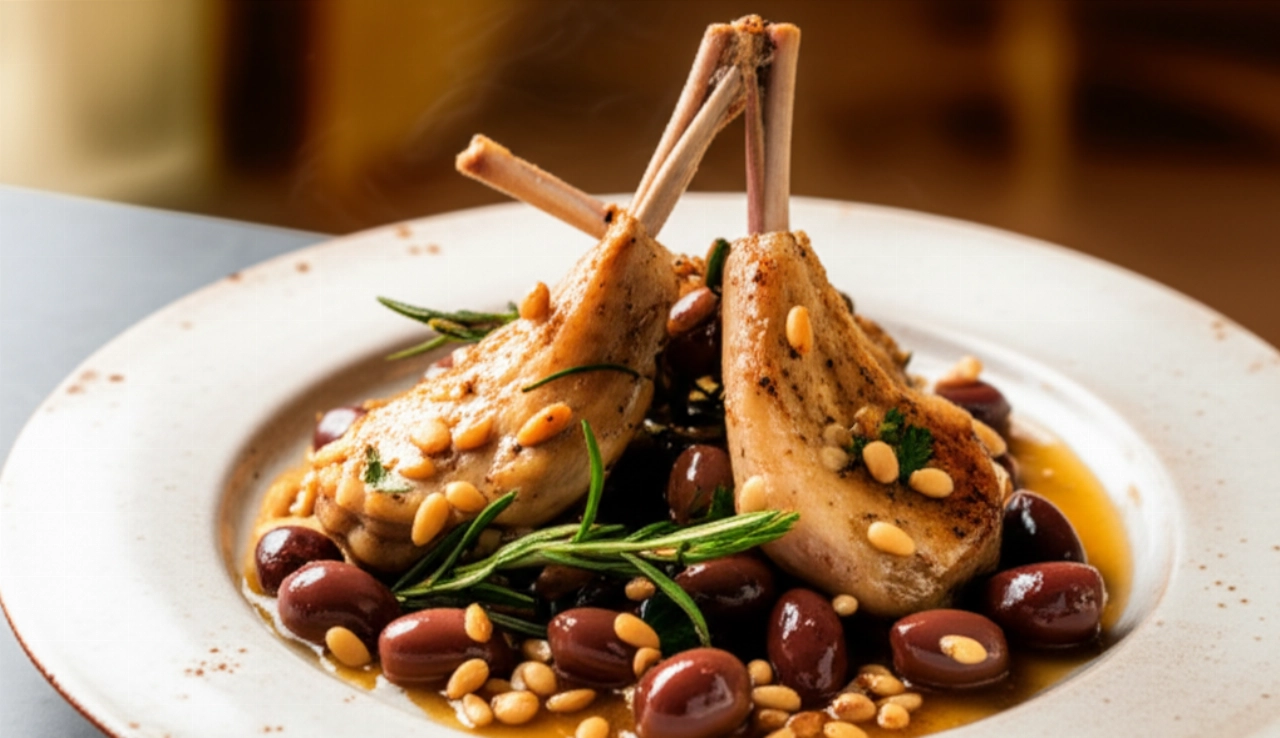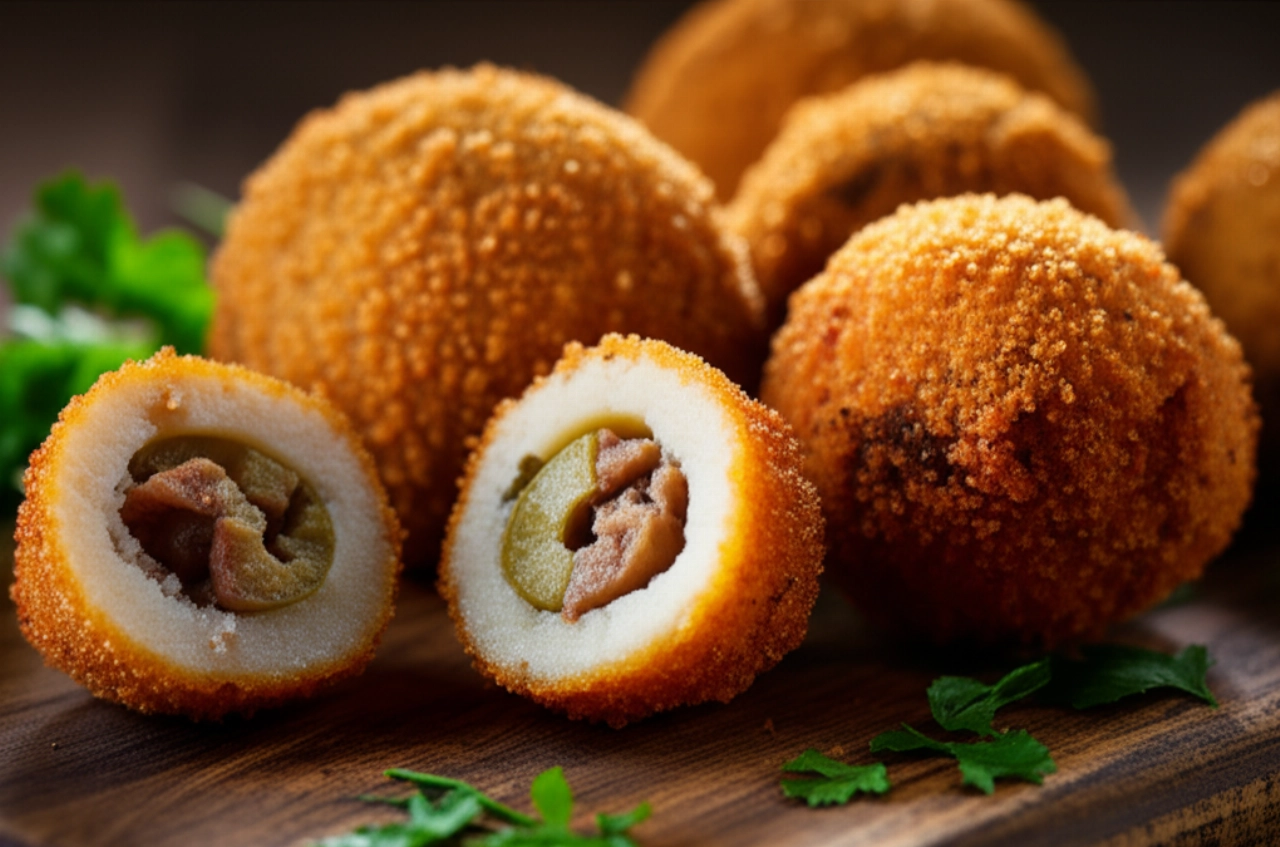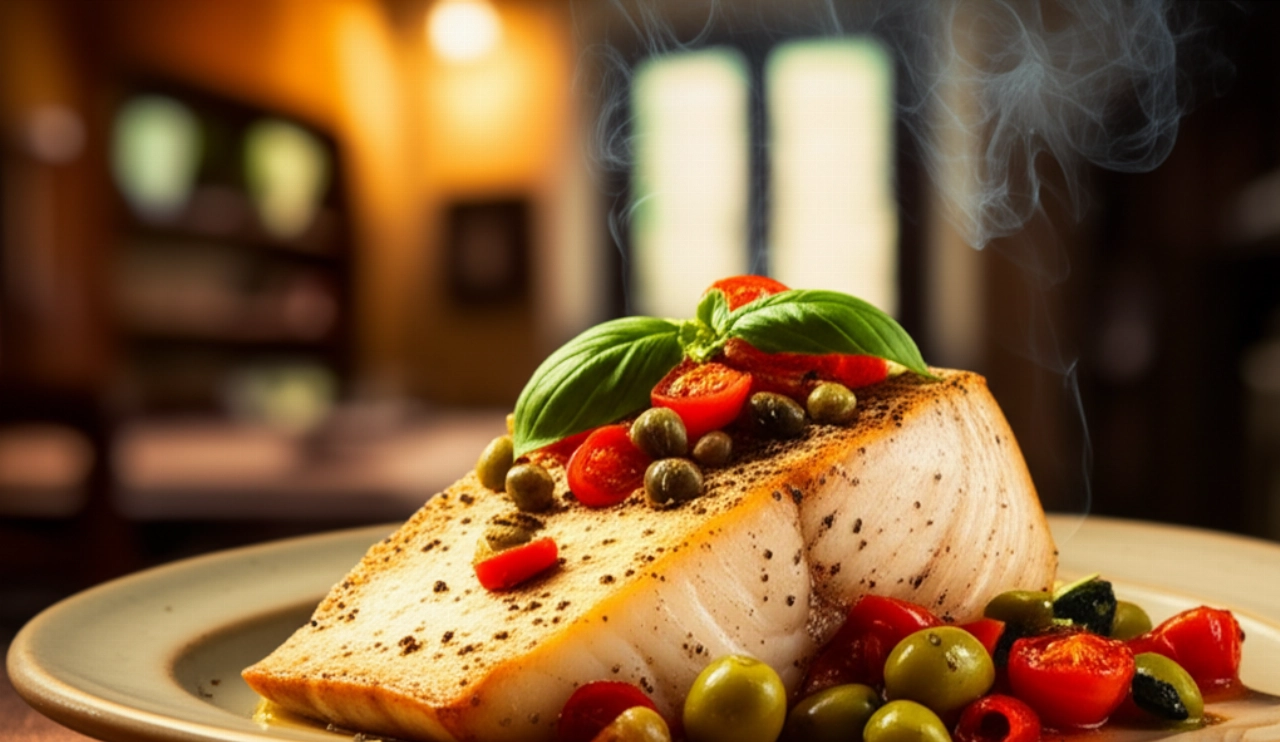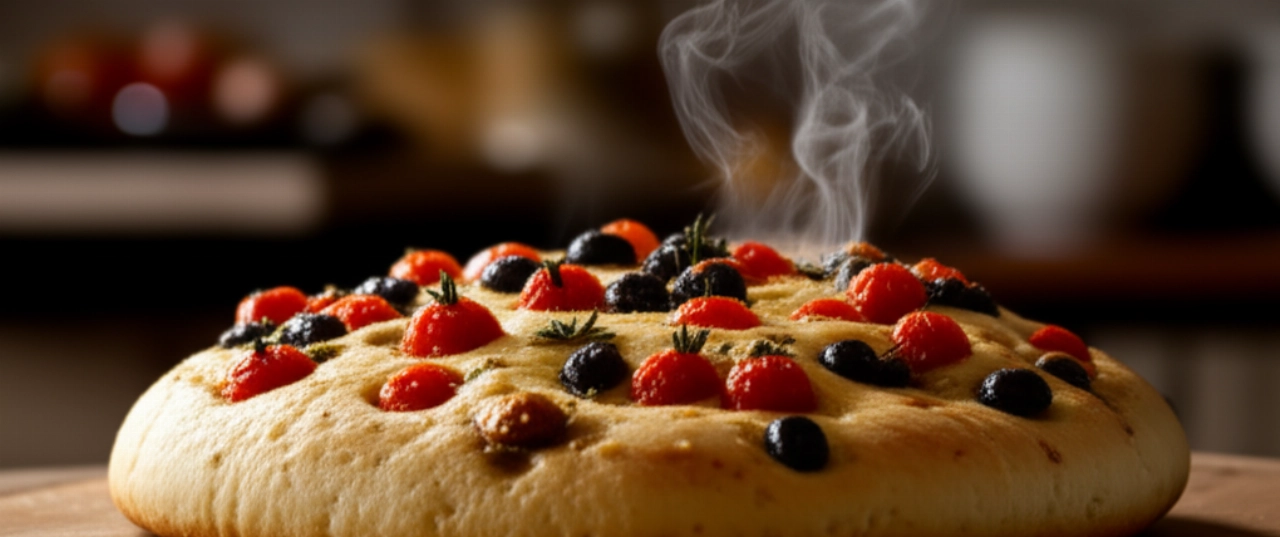Dreaming of bringing to the table a stewed rabbit so tender it melts in your mouth, with a rich and fragrant sauce that invites you to mop it up to the last drop? A dish that tastes of Sunday, of family, of those traditions that warm the heart and soul?
Too often, however, rabbit can turn out stringy, dry, or the sauce lacks that rich, well-rounded flavor you expect. Finding the authentic recipe, one that tastes like home and guarantees an impeccable result, seems like a challenge. The fear of making mistakes and wasting precious ingredients can hold you back, leaving you with a desire for that genuine taste but without the certainty of achieving it.
Make yourself comfortable. On this page, you won't just find a list of ingredients, but the definitive guide, full of grandma's tricks and tips, to prepare the most tender and flavorful stewed rabbit of your life. Success is guaranteed, and you'll feel like a true home chef, ready to receive applause and requests for seconds. Here you'll feel at home, and your rabbit will be a masterpiece!
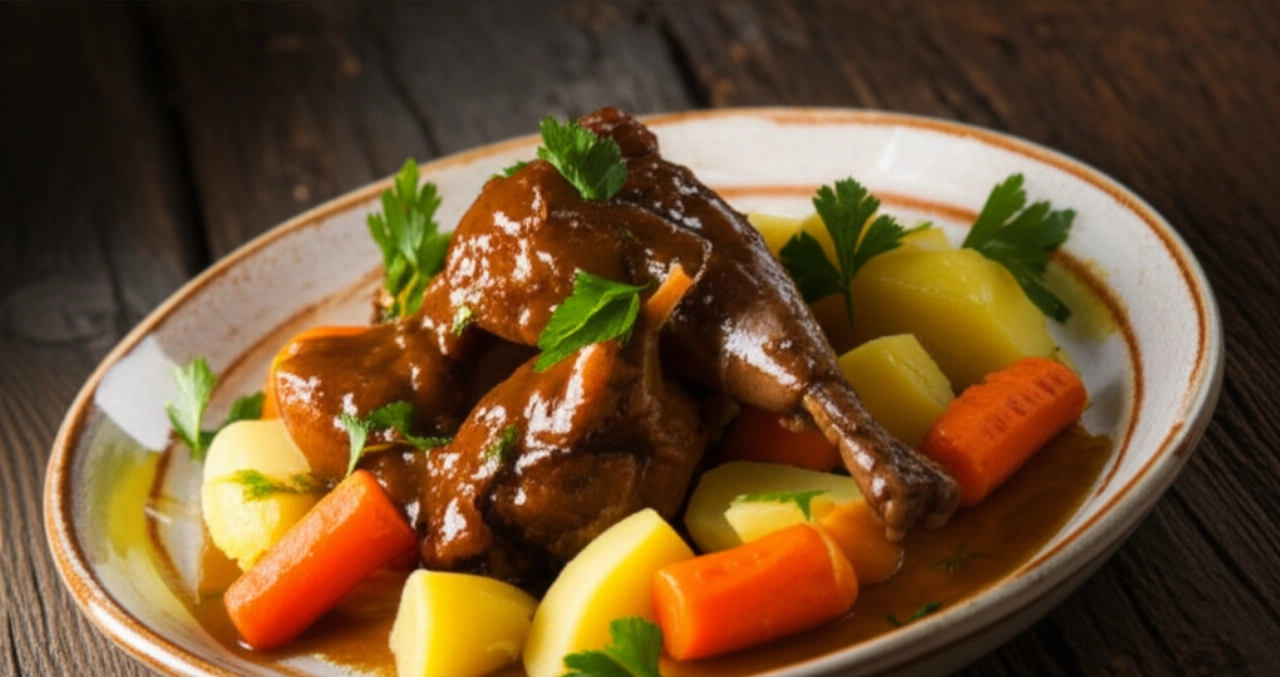
Smart Ingredients: The Choice That Makes the Difference
Every great dish starts with carefully chosen ingredients. It's not just a list, but a thoughtful selection that ensures your success. Here's what you need and why:
- Rabbit: Choose a whole, pre-portioned rabbit, about 1-1.2 kg. Opt for free-range if possible. Its meat will be more tender and flavorful, absorbing aromas better and gently falling apart during cooking.
- Pitted Taggiasca Olives: They are the queens of this dish! Small, sweet, and aromatic, they pair divinely with rabbit meat. Do not use olives that are too salty or bitter, as they would ruin the balance of the sauce.
- Dry White Wine: A good dry white wine, not too aromatic, is essential for deglazing and adding depth to the sauce. It helps to cut through richness and create that complex, enveloping flavor base.
- Quality Tomato Passata: A thick and sweet passata is the base of our sauce. Choose a good one, preferably organic, because its flavor will be prominent.
- Vegetables for Soffritto: Onion, carrot, and celery. Chop them finely for a soffritto that melts into the sauce, releasing sweetness and aroma without being intrusive.
- Fresh Aromatic Herbs: Rosemary and bay leaf. Do not use dried ones; the aroma would not be the same. Fresh herbs impart an unmistakable country and traditional aroma.
- Hot Vegetable Broth: Always keep some on hand. It will be needed to thin the sauce if it dries out too much, maintaining a constant cooking temperature and not stopping the meat from cooking.
- Extra Virgin Olive Oil: A good EVO oil is the base for browning and soffritto. Choose a quality one; its flavor will be noticeable.
- Salt and Black Pepper: Essential for balancing flavors.
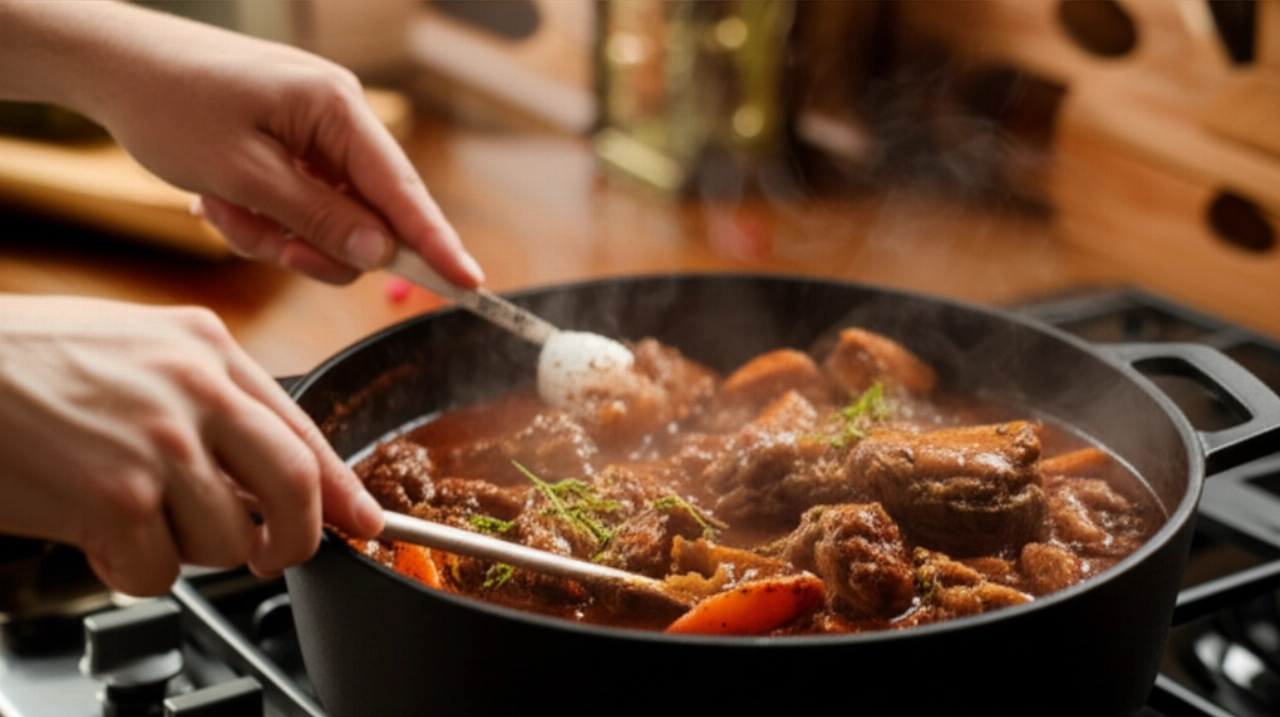
The 3 Secrets for a Tender and Flavorful Stewed Rabbit (and How to Avoid Mistakes)
Preparing a perfect stewed rabbit is not difficult, but there are small tricks that make the difference between a good dish and a masterpiece. I will reveal the secrets that will protect you from the most common mistakes:
1. The Marinade (The Secret to Tenderness)
The mistake to avoid: Skipping the marinade or making it too short. Rabbit, if not properly treated, can turn out a bit stringy.
The secret: A short marinade in white wine with aromatic herbs and a clove of garlic. It's not mandatory, but I highly recommend it! It helps to tenderize the meat, eliminate any gamey flavors, and infuse it with aromas from the start. 30 minutes are enough, but even an hour works wonders. This step is your ally for meat that melts in your mouth.
2. Perfect Browning (The Secret to Flavor)
The mistake to avoid: Cooking the rabbit over low heat from the start, or not browning it on all sides.
The secret: Brown the rabbit pieces over high heat, on all sides, until they are well golden. This crucial step seals the juices inside the meat, creating a flavorful crust that will add incredible depth of taste to the sauce. Don't rush this phase; this is where the flavor is built!
3. Slow and Gentle Cooking (The Secret to Absolute Tenderness)
The mistake to avoid: Rushing and cooking the rabbit over too high heat or for too short a time.
The secret: Stewed rabbit doesn't like to be rushed. It must simmer gently, over very low heat, for an extended period. This is how the meat tenderizes until it becomes buttery and the sauce thickens perfectly, concentrating all the aromas. Cover the pot and let time work its magic. Every now and then, check and add hot broth if necessary, but don't disturb its rest too much.

The Extra Touch: My Grandma's Handed-Down Tip
My grandma, the true master of stewed rabbit, had a secret that few know and that made her dish unforgettable. She always used to say: "The rabbit must 'weep' in its sauce, but it must never be cold!"
She meant that during cooking, if the sauce reduces too much, you should never add cold water, but always hot vegetable broth or, if you don't have it, a little warmed white wine. This avoids thermal shocks that would make the meat tough and interrupt even cooking.
And her true magic touch? In the last 10-15 minutes of cooking, she always added a small piece of untreated lemon zest to the sauce. She didn't grate it, she put it in whole. This zest, releasing its essential oils, adds a note of freshness and acidity that balances the richness of the dish, enhancing the flavor of the rabbit and olives without overpowering them. Try it, and you'll never go back!
Let's Prepare Stewed Rabbit Together: The Step-by-Step Guide
What you need:
Ingredients:
- 1 whole rabbit (about 1-1.2 kg), pre-portioned
- 100 g pitted Taggiasca olives
- 1 large onion
- 1 carrot
- 1 celery stalk
- 1 clove garlic
- 200 ml dry white wine
- 400 g high-quality tomato passata
- 2-3 sprigs fresh rosemary
- 2 fresh bay leaves
- Hot vegetable broth as needed
- Zest of half an untreated lemon (optional, but recommended for grandma's touch)
- Extra virgin olive oil as needed
- Salt and freshly ground black pepper as needed
Tools:
- Large, heavy-bottomed casserole dish (ideally cast iron or non-stick)
- Cutting board and knife
- Bowl for marinating
- Ladle
Step-by-Step Procedure:
- Prepare the Rabbit: Carefully wash the rabbit pieces under cold running water and dry them very well with paper towels. This step is crucial for good browning. If necessary, remove any excess fatty parts.
- The Marinade (the first secret): In a large bowl, place the rabbit pieces. Add the white wine, a sprig of rosemary, a bay leaf, and the crushed garlic clove (unpeeled, so you can easily remove it later). Mix well, cover with plastic wrap, and let marinate in the refrigerator for at least 30 minutes, or even an hour.
- Prepare the Soffritto: While the rabbit marinates, finely chop the onion, carrot, and celery.
- Perfect Browning (the second secret): In a large, heavy-bottomed casserole dish, heat a generous drizzle of extra virgin olive oil over medium-high heat. Drain the rabbit pieces from the marinade (save the wine!) and brown them over high heat on all sides until they are well golden. This will create a delicious crust. Remove them from the casserole and set aside.
- Create the Aromatic Base: In the same casserole, if necessary, add another drizzle of oil. Add the chopped onion, carrot, and celery. Sauté gently over low heat for 5-7 minutes until tender and translucent. Add the remaining rosemary and bay leaf as well.
- Deglaze with Wine: Return the rabbit pieces to the casserole. Deglaze with the marinade wine (or other dry white wine if you didn't marinate it). Let the alcohol evaporate completely, scraping the bottom of the pot with a wooden spoon to retrieve all the caramelized flavors.
- Add Tomato and Olives: Add the tomato passata and pitted Taggiasca olives. Stir well to combine all ingredients.
- Slow Cooking (the third secret): Add a ladleful of hot vegetable broth, just enough to half-cover the rabbit. Bring to a boil, then reduce the heat to minimum, cover with a lid, and let simmer gently for about 1 hour 30 minutes – 2 hours. The exact time depends on the size of the rabbit and the desired tenderness.
- Check and Stir: During cooking, turn the rabbit pieces occasionally and add more hot vegetable broth if the sauce dries out too much. The meat should always remain moist and immersed in the sauce.
- Grandma's Touch: In the last 10-15 minutes of cooking, add the untreated lemon zest (if using). Check for salt and pepper and adjust if necessary. If the sauce is too liquid for your taste, uncover the casserole and let it thicken over slightly higher heat for a few minutes, stirring.
- Serve: Your stewed rabbit is ready when the meat easily falls off the bone. Serve it hot, accompanied by soft polenta, creamy mashed potatoes, or simply with plenty of homemade bread for dipping.
Tips and Frequently Asked Questions about Stewed Rabbit
Here are some of the most common questions you might have, with answers that will give you even more confidence in the kitchen.
Can I use frozen rabbit?
Yes, you can use frozen rabbit, but make sure to thaw it completely in the refrigerator before proceeding with the recipe. Dry it very well before browning, it's essential to get that golden and flavorful crust.
How can I make the sauce thicker?
If the sauce seems too liquid at the end of cooking, you can remove the lid and slightly increase the heat in the last 10-15 minutes, stirring often, to reduce it. Alternatively, you can remove the rabbit pieces, take a ladleful of sauce, dissolve a teaspoon of cornstarch in it, and then return everything to the pot, stirring until it thickens.
Can I prepare stewed rabbit in advance?
Absolutely yes, in fact! Stewed rabbit is one of those dishes that gains flavor when rested. You can prepare it the day before and gently reheat it before serving. The flavors will meld even better, making it even more delicious.
What side dishes pair best with stewed rabbit?
Traditionally, stewed rabbit pairs perfectly with soft polenta, which divinely soaks up the sauce. Also excellent with creamy mashed potatoes, roasted potatoes, or simply with good homemade bread for dipping.
Can I add other aromas or ingredients?
Of course! Cooking is also about experimentation. Some love to add dried porcini mushrooms (rehydrated) to the soffritto, or a pinch of chili pepper for a spicy note. You can also vary the aromatic herbs, using thyme or marjoram. The important thing is not to upset the balance of traditional flavors.
A Hug of Flavor: Your Perfect Stewed Rabbit!
There you have it! Now you no longer just have a recipe, but all of grandma's secrets, tricks, and tips to bring to the table a stewed rabbit that tastes of celebration, tradition, and love. A dish that will make you feel like a true "guardian" of Italian cuisine, capable of recreating authentic and unforgettable flavors.
Don't be afraid to experiment, but start from this solid base and you'll see that applause won't be lacking. Prepare the bread, because dipping is a must and will be the most delicious part of this dish that will make you feel at home, every time!
Have you tried our stewed rabbit recipe? We're very curious to see your masterpiece! Leave a comment below, tell us how it went, or share a photo on Instagram by tagging @CercaRicette.it. If you loved this dish, you can't miss our recipe for Creamy Mashed Potatoes, the perfect accompaniment, or for an equally tasty main course like Grandma's Meatballs in Sauce.
